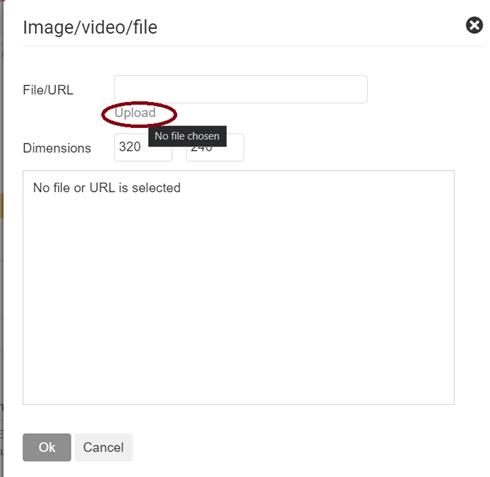Other Parts Discussed in Thread: INA303, INA302, INA301
Hi sir,
Would you please helping to check my customer's design about INA300? And they want to know the max error% about the result? Thanks for your kindly help.
Best regegards,
Gary Teng
This thread has been locked.
If you have a related question, please click the "Ask a related question" button in the top right corner. The newly created question will be automatically linked to this question.
Gary,
From the limited schematic if looks fine. The limit resistor does not seem to have a K on the 14 and I assume that is what is required.
For error to get the best answer that I need some information. Or you will need to look at our training to determine which error sources matter. Normally CMRR and PSRR do not play a large part. Gain error could be dominated by the Rshunt value. Also you will need to account for the error in you Rlimit resistor.
https://training.ti.com/ti-precision-labs-current-sense-amplifiers
Hi,Sir,
Could you help to confirm below:
PoE PD min = 12.95W
12.95W*0.87=11.26W ----------------PoE module efficiency
11.26W/[12.5V*(1+5%)]=0.858A-----Current min.
11.5V*(1-5%)=10.925V-----------------Voltage min.
10.925V*0.858A=9.373W--------------Power min.
Best regegards,
Zong Wu
Hello Zong,
That is incorrect calculation for Rlimit. The voltage of your common mode does not matter in the calculation. I apologize for not seeing that. In the datasheet there is a table for calculating the Rlimit. The input scale of the INA300 is from 0 to 250mV differential and your trip point is at 8.58mV. Assuming your Rsense is 10mΩ and ILimit = 0.858A the calculations are done below. The Rsense value is a tradeoff of power vs accuracy. The Rsense value could be increased if noise or increasing accuracy is required. The 500µV below in the calculations is to account for offset. As you increase Rsense the Vos is less of a impact. This is all at a trade off of power and voltage drop accross Rsense.

| ILoadTrip | 0.858 | A |
| Rsense | 0.0100 | Ω |
| Vtrip | 0.00858 | V |
| Rlimit | 454 | Ω |
Hi,Sir,
Could you help me to confirm below
PRsense
=Rsense*I^2
=0.001*0.858*0.858
=736.2uW (<250mW)
Rsense
=PRsense/(I^2)
=736.2uW/0.858A/0.858A
=1m ohm(<2.5m ohm)
Vlimit=0.858A*0.001ohm=858uV
Rlimit
=(Vlimit+500uV)/20uA
=(858uV+500uV)/20uA
=68 ohm
Best regegards,
Zong Wu
I would increase your Rsense to the maximum possible to get best signal. 10mΩ would be better than 2.5mΩ if you are worried about accruacy.
Hello Zong,
You are correct that this will be ok and will not be an issue.
Hello Zong,
This will be an issue as you are approaching the offset of the INA300. The offset is 500µV. You should increase your Rshunt like mentioned above. This is a tradeoff on your design of accuracy and error at trigger point or power consumption on the Rsense.
Hello Zong,
This is an example of a Rshunt used with the maximum power rating for that resistor is 250mW. This is an example. Use your Rshunt and Rshunt maximum power ratings for these calculations.
Hi,Sir,
1. In datasheet , Maximum measurement error:5%
How is this calculated?
2. At datasheet, 7.3.1.1 Selecting a Current-Sensing Resistor::Example part
“Given the total error budget of 5%, up to 3.5% of error is available to be attributed to the internal offset of the device.”
What is the basis of this "Given the total error budget of 5%" ?
BR,
Zong Wu
Hello Zong,
1)The 5% is a made up requirement for the example.
2) This is mentioned to say the error for this example is met.
You can improve the Rshunt value and improve the accuracy but this will not improve the Vos value. This may not work in all situations as the power may not be acceptable. For example if my Vsense max was 250mV then the offset would calculate to .2% and you would still need to account for the tolerance of the Rshunt and ILimit resistors.
For better accuracy with a comparator please look at INA301(Single comparator), INA302 and INA303(Dual Comparator). This link will give you all the comparator options but I highlighted the best accuracy options. For these devices if you use similar calculations you will also need to account for gain error. In the INA300 this is accounted for in the VOS error.
Hi,Sir
Before:
11.26W/[12.5V*(1+5%)]=0.858A
11.5V*(1-5%)=10.925V
10.925V*0.858A=9.373W
After:
11.26W/[12.5V*(1+1%)]=0.89A
11.5V*(1-1%)=11.38V
11.38V*0.89A=10.13W
PS.
Our case Total error:
Vsense_max
=Rsense*Imax
=1.36Ω *0.858A
=1.17V
(Vos/Vsense_max)
=(500uV/1.17V)
=0.043% -------Error from offset
Is the above calculation correct?
BR,
Zong
Zong,
That is correct with your calculations except your Vsense max is too large. The largest you can have is 250mV and I would suggest you give some head room and use about 200mV as your trigger point for you Vsense.
In that case I would go with 200mV = Rsense*0.858A --> Rsense = 0.2/0.858 = .2331Ω. The above power just on Rsense I think would be too large and the power for this resistor would be 0.1716W but you would get a higher error.
Hi,Sir,
I use Rsense is 1W 1% at this datasheet,
So Rsense_max=1W/(0.858A^2)=1.35Ω
Now I select Rsense=10mΩ < 1.35Ω
Vsense=Rsense*Imax=8.58mV < 200mV
Vsense_max=Rsense_max*Imax=1.35Ω*0.858A=1.15V
Is this correct?
BR,
Zong
Hello Zong,
You should use Rsense~233mΩ explained above. For you to minimize the offset you should have your trip value as high as possible. If you are having trouble understanding the tradeoffs please see our training series for current sense amplifiers.
For your calculations you need to keep your Rsense you select for all calculations. Your example above still has the Vsense over 250mV which is the max input range for the INA300.
Hi,sir,
We will select Rsense=200mV/0.89A=225 mΩ.
We have other question:
1.About IEA301, from TI FAE "For these devices if you use similar calcularions you will also need to account for gain error."
2.Why does IEA301 need to consider Gain Error and IEA300 does not have a note about Gain Error?
3.Regarding the concept of Total Error of IEA300 and IEA301, for example, if Total Error is 5%, do you think that this is ± 5% for a certain set
value? Or do you think it's ± 2.5%?
Hello Zong,
1)The reason INA301 has a gain error specification is because there is an analog output that you can measure the output of the analog amplifier. The INA300 only has a digital output and has no analog output and the error is represented as and offset and includes any error seen by the analog components that would be seen as a gain error.
2)I believe I covered in #1.
3)This is +/- 5%
The INA301 output does not need to connect to an ADC but you can monitor the output if needed. You could still use the INA301.
Hi,Sir,
How about concept of Total Error of INA300 and INA301?
There are Error_total,Error_initial,Error_available at INA301.
There is only Error_ available at INA300.
How do we calculate current sense error (tolerance) at INA300,INA301 respectively ?
Hello Zong,
The INA300 goes through the example to calculate the error and you have gone through some of the calculations in this post. Please review that in the datasheet.
The INA301 has more analog components and the output is analog that is observed you will need to calculate error differently and our training videos goes into depth to help you with this. You will then need to add the offset of the comparator. Keep in mind the offset of the comparator is after the gain of the analog component.
https://training.ti.com/ti-precision-labs-current-sense-amplifiers
Hello Zong,
Click insert Image/video/file. Then click on Upload. Select picture and click ok. You may have to adjust the dimensions. Below I inserted some images.


Hi,Sir
1. Why Alert_N has many jitters ?
It looks like Vsense range to do jitters, how voltage range is this?
2. Why power on consumption 11.06W Alert_N can't reset system?
But open AI 9.05W can reset system.
Current sense_resin_n_20210510.pptx
BR,
Zong
Hello Zong,
Please let me know where in the schematic you are probing. The signal names do not match to scope images. What pull up voltage are you using and what is the pull up voltage. R779 is a DNI. Is this correct?
I would probe on OUT as well to see the signal seen at the comparator.
For the reset have you verified that Output voltgage on pin 2 is below the comparator output.
With a high impedance meter you can verify the Limit voltage.